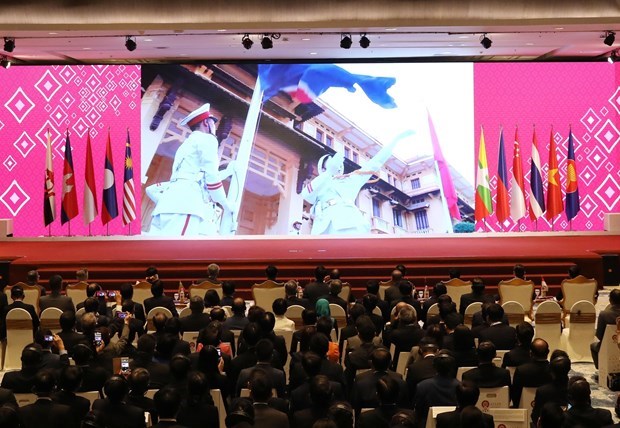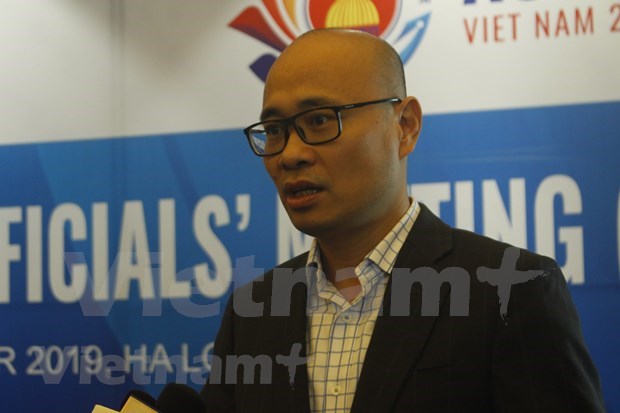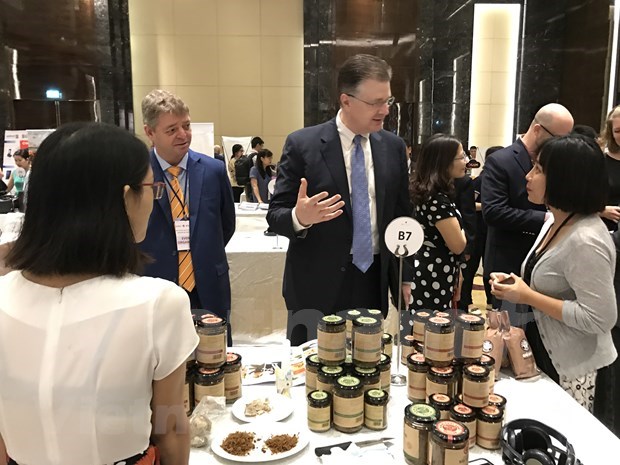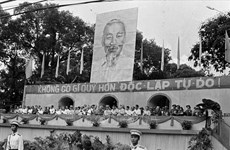ASEAN countries should jointly attract foreign investment
Hanoi (VNA) – The Association of Southeast Asian Nations (ASEAN) is one of the most attractive foreign investment regions in the world. However, it is difficult for separate member countries to compete with other larger economies in investment attraction, according to Director the Multilateral Trade Policy Department under the Ministry of Industry and Trade Luong Hoang Thai.
 Vietnam to take over the position of the Chair of the ASEAN in 2020. (Photo: VNA)
Vietnam to take over the position of the Chair of the ASEAN in 2020. (Photo: VNA)In an interview granted to the Vietnam News Agency, Thai said as ASEAN includes diverse economies with different development levels and production industries, it would be difficult for separate countries to compete with external partners. Therefore, promoting intra-bloc cooperation and connectivity is important to create a common production space.
 Luong Hoang Thai, Director of the Multilateral Trade Policy Department under the Ministry of Industry and Trade, in an interview with Vietnam News Agency. (Photo: Duc Duy/VietnamPlus)
Luong Hoang Thai, Director of the Multilateral Trade Policy Department under the Ministry of Industry and Trade, in an interview with Vietnam News Agency. (Photo: Duc Duy/VietnamPlus)
He cited a survey by the US Chamber of Commerce that over 80 percent of multinational companies in the region evaluate the integration of ASEAN member countries as an important factor for them to consider the possibility of investing in the region.
In fact, this is a strength that ASEAN has looked towards over the past time. ASEAN member countries have learned from each other effective ways to regulate production and business activities, and make it easier for multinational companies to invest in the region, Thai said.
He added that the Fourth Industrial Revolution is profoundly affecting the economy of all member nations. It is difficult for a small or medium economy to compete in that context.
For example, in the field of e-commerce, if an economy has a population of about 100 million, it is difficult to stand alone to develop e-commerce or big data.
When ASEAN countries shake hands, its population could reach 600-700 million by 2030, a potential for the involved parties to work together in newly developed industries as well as become more successful in the Fourth Industrial Revolution.
Particularly, ASEAN is now considered one of the regions with the highest growth in e-commerce in the world, so the potential in new areas is enormous, Thai said.
He described the conclusion of the negotiations on the e-commerce agreement between ASEAN member countries in 2017 as the first step towards regional integration in the field.
E-commerce and digital economy are new industries which require ASEAN countries to learn from each other, he suggested.
ASEAN is also studying the readiness of the member economies, he said, adding that the outcome of this research will help the bloc build a strategy to enhance cooperation in the Fourth Industrial Revolution.
 Big companies around the world consider ASEAN an attractive destination for investment. (Photo: Duc Duy/VietnamPlus)
Big companies around the world consider ASEAN an attractive destination for investment. (Photo: Duc Duy/VietnamPlus)
The biggest challenge in trade cooperation in ASEAN is the global economic fluctuations, according to Thai.
The world’s economy has changed over the recent past, especially within the cooperation framework.
Previously, many ASEAN’s regulations were based on the multilateral trade rules, specifically those of the World Trade Organisation (WTO).
However, at present, there are discussions towards the reform of the WTO to meet the requirements of international trade and economic development.
Strategic competition between countries will also create uncertainties for ASEAN which groups open economies, Thai added.
Founded in 1967, ASEAN now groups 10 member countries, namely Brunei, Cambodia, Indonesia, Laos, Malaysia, Myanmar, the Philippines, Singapore, Thailand and Vietnam.
Vietnam will take the role of ASEAN Chair in 2020. The country has chosen “Cohesive and Responsive” as the theme of the ASEAN Chairmanship Year 2020, given the complicated developments in the region and the world that pose many challenges to multilateralism and free trade as well as the increasing non-traditional security threats./.











